(This article and the accompanying timeline were originally published on the World Religions and Spirituality website, and are republished with permission.
(Catherine B. Abbott holds a degree in history from California State University-San Marcos and an MA from the University of Wisconsin-Milwaukee. She is currently a PhD student at UWM. She may be reached at catherineabbott@yahoo.com. Her collection of articles on this site may be found here.
(Rebecca Moore is Professor Emerita of Religious Studies at San Diego State University. She has written and published extensively on Peoples Temple and Jonestown. Rebecca is also the co-manager of this website. Her other articles in this edition of the jonestown report are Jonestown in American Religious Life and The Erasure (and Re-inscription) of African Americans from the Jonestown Narrative. Her collection of articles on this site may be found here. She may be reached at remoore@sdsu.edu.)
Doctrines/Beliefs Concerning Women’s Roles
The primary ideological concerns in Peoples Temple were racial inequality and social injustice, rather than the advancement of women’s rights. Nevertheless, the oppression of women in society was known to Peoples Temple members and their leader, Jim Jones (1931–1978). During at least one sermon, given in Fall 1974, Jones spoke of the Bible as the source of women’s oppression (Q1059-6 Transcript 1974). He blamed the poor treatment of women on the biblical story of Adam and Eve (Genesis 3). Like other Christian interpreters, Jones claimed that Genesis 3:16, the passage in which Eve’s punishment for disobeying God’s command is pain in childbirth and being ruled by her husband, was the cause of women’s relegation to subservient positions in society. In his tract “The Letter Killeth,” Jones also provided a wealth of examples of the mistreatment of women as apparently sanctioned in the Bible (Jim Jones n.d.)
Despite the lack of a clear-cut feminist ideology, white women in Peoples Temple did advance to positions of leadership, achieving a measure of authority and responsibility not available to them in wider American society in the 1970s. While the overarching narrative in the Temple concentrated on race relations and economic exploitation of people of color in the United States and abroad, a simultaneous subtext granted some white women extraordinary privileges. This disconnect was noted by eight young adults who left the movement in 1973. The “Eight Revolutionaries” wrote a letter to Jim Jones explaining their defection in which they pointed out that:
You said that the revolutionary focal point at present is in the black people. There is no potential in the white population, according to you. Yet, where is the black leadership, where is the black staff and black attitude? (The Eight Revolutionaries 1973)
The Eight Revolutionaries listed by name the individuals (male and female) who they believed demanded sex of Jim Jones, placing the onus for such relationships on members rather than on the leader.
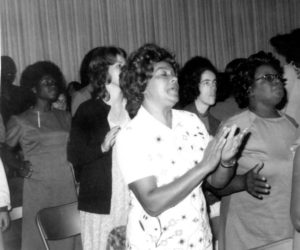
Yet it was clear that Jones controlled most sexual relationships that occurred within the Temple, approving or rejecting marriages and partnerships through a Relationships Committee. Connections with outsiders were not approved. While Jones claimed that everyone but himself was a homosexual and seemed to denigrate gays and lesbians, he did allow LGBT relationships to flourish in Jonestown (Bellefountaine 2011).
Jones deliberately humiliated women and men in a variety of ways, frequently focusing on their sexual inadequacies. On one occasion he insisted that Cathy Stahl (1953–1978) remove her clothes and jump into the swimming pool located at the Redwood Valley complex of the Temple. This was to teach her not to eat so much. “You are terribly overweight already,” he told her in a public meeting, and “the only way you will understand these rules is through embarrassment” (Mills 1981:258). Stahl stripped to her bra and panties, held together by a safety pin, and was pushed into the deep end of the pool.
On a separate occasion Jones required a woman to undress completely in front of the Planning Commission, the official leadership committee for the Temple. The reasons are unclear: either she had written a love note to Jones, according to some individuals present; or she had written something critical of the group, by her own account. (Because she is still living, she would like to remain anonymous.) In any event, she stood naked before fifty people for more than an hour while they criticized her body, her genitals, and her person (Nelson 2006).
Thus, beliefs about women in the Temple paradoxically led to their abasement and, at the same time, to the advancement of some women over others in the Temple.
Organizational Roles Performed by Women
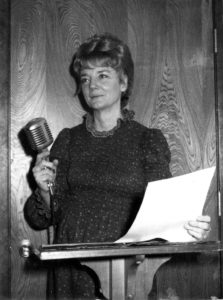
Women’s leadership roles changed throughout the course of Peoples Temple’s twenty-five year history. When the group was based in Indiana in the 1950s, Jim Jones and his wife Marceline Mae Baldwin Jones (1927–1978), served as the primary decision-makers. A few other individuals are listed on incorporation documents, but it is clear that the couple worked as team: Jim was the charismatic front man whom people recognized as the leader, while Marceline worked behind the scenes as the administrator of several licensed care facilities, which provided income to support the church’s benevolence programs. With the move to northern California in the mid-1960s, more women became involved in administration, although Jim Jones remained the final decision-maker. As the church expanded to San Francisco and Los Angeles in the early 1970s, an efficient bureaucracy developed to manage the programs offered by the organization. For the most part, women oversaw these programs. While the early pioneers at the Temple’s agricultural project in Guyana were primarily men, a few women were also engaged in the heavy labor required to clear the jungle. Women back in the United States were instrumental in effecting the mass migration of more than one thousand Temple members to Guyana in 1977. By the very end of Peoples Temple’s trajectory, women both in the United States and in Jonestown coordinated almost all of the group’s operations. (See, WRSP profile of Peoples Temple)
A number of white women exercised broad authority in Peoples Temple through the various leadership roles available: as confidantes of Jim Jones, as administrators, and as members of the Planning Commission, all of which served the rank and file (Hall 1987). Confidantes were those women whom Jones trusted the most, generally women with whom he had long-term relationships, such as his wife Marceline Jones and his mistresses Carolyn Layton (1945–1978), Maria Katsaris (1953–1978), Teri Buford, and a few others. They made up an inner circle that included a few men.
Administrators were second-tier leaders (such as Harriet Tropp (1950–1978) and Sharon Amos (1936–1978)) who carried out Jones’ orders, or realized his imperfectly imagined ideas (Maaga 1998:72). Amos managed the group’s communal home, called Lamaha Gardens, in Georgetown, Guyana, and conducted business with Guyanese officials. Tropp handled media relations for the group, and dealt with negative publicity that was generated by the Concerned Relatives, a group created to raise media awareness and shape public opinion about Peoples Temple. Tropp was one of the few people who could criticize Jim Jones, as her memo about “The Uglification of Jonestown” demonstrates. In this document she notes that the commune had embarked on a misguided beautification project because “Dad wants it done,” against sound advice provided by several people.
I think the above just serves to highlight a problem we have in decision-making. That is, if you say you want something done, we ignore any advice we’ve been given and we go against our own judgment, and go ahead. . . . I think the essence of the problem, or at least one aspect of it, is that no one is willing to oppose your opinion in certain matters, and I frankly think that sometimes you are wrong, and no one is willing to say so. I realize this is quite a volatile statement, but I think it is one factor in the dynamics of how this organization functions that gets us in trouble (Tropp, quoted by Stephenson 2005:101).
Operating in Redwood Valley and San Francisco, the Planning Commission was more broadly based than either the confidantes (or inner circle) or the administrators. It was comprised of women and men who developed policies and procedures in a semi-democratic fashion, although ultimately Jones alone made the final decisions that affected the group. With the move to Guyana, the Planning Commission seemed to be abandoned in favor of a more diverse and decentralized administrative body. Authority in Jonestown, however, still rested with Jim Jones (Moore, Pinn, and Sawyer 2004:69–70).
In addition to these three primary leadership levels, individual women had responsibility over numerous departments and operations throughout the history of the movement. (Because data are readily available from Jonestown documents posted online at the Alternative Considerations of Jonestown and Peoples Temple (Alternative Considerations of Jonestown and Peoples Temple website 2018) we report on those; countless files held by the California Historical Society will undoubtedly support the picture being constructed once they receive scholarly evaluation.) Don Beck, a former Temple member, analyzed organizational charts, work assignment lists, and other items to develop a clear portrait of who accomplished tasks in Jonestown. For example, the ruling “triumvirate” of the jungle community consisted of Johnny Brown Jones (1950–1978), Carolyn Layton, and Harriet Tropp. They supervised the activities of eight department heads who managed thirty different divisions (Beck n.d.). Maria Katsaris was in charge of banking; Harriet Tropp and Jann Gurvich (1953–1978) were two of the three members of the legal team; two African American women, Shanda James (1959–1978) and Rhonda Fortson (1954–1978), handled entertainment, such as video and film programming. Heather Shearer’s analysis of the paperwork required to mount the emigration of more than one thousand people out of the United States to Guyana does not provide individual names, but vividly depicts the tremendous amount of work conducted by rank-and-file, predominantly female, volunteers (Shearer 2018).
Several women deserve specific mention in terms of their roles within the organization.
Psychobiographies of Jim Jones’ mother Lynetta Putnam Jones (1902–1977) depict a woman who simultaneously hated and loved her troubled son (Nesci 1999; Kelley 2015). By several accounts she was a feisty woman who, though married, was in effect a single mother since her third husband, James Thurman Jones (1887–1951), the father of James Warren Jones, was a disabled veteran of World War I. Her own writings and interviews depict a turbulent background for her son (Lynetta Jones “Writings” and “Interviews” n.d.). She moved into the home of newlyweds Jim and Marceline, and remained a fixture throughout their lives, even moving to Jonestown and dying there in 1977.
Marceline Jones, wife of Jim Jones, was considered to be the “mother” of the Temple, corresponding to Jones’ role as “father.” She was well-respected by all the members, and known for her kindness and compassion. An account written by her biological son Stephan Jones attempts to address the dilemma of her loyalty to Jones despite his compulsive infidelities. His narrative includes a moving letter he wrote to his mother shortly after her death in Jonestown:
Whatever your own diseased thinking was, one thing is certain: You believed you had no choice but to stay. You remained in the fold to see us through it, to keep us alive and as whole as possible beyond doom, or until we were strong enough to escape on our own. But it wasn’t just the children you’d held as babies that you championed, was it, Mom? There were the children of the Temple too. And there was one more child, wasn’t there? You believed you could fix things—fix HIM—didn’t you? (Stephan Jones n.d.).
Marceline’s name is found on numerous legal documents, indicating her role as a corporate officer and decision-maker. An able nursing home administrator, she was responsible throughout the movement’s history for developing a significant income-producing arm of the Temple that provided needed healthcare services at the same time.
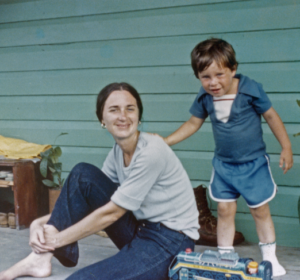
Next to Jim and Marceline Jones, Carolyn Layton had perhaps the most important leadership role in the movement. She oversaw planning and organizational committees. According to Mary McCormick Maaga, “Carolyn Layton was as much at the center of building and maintaining the organization of Peoples Temple and later, Jonestown, as was [Temple attorney] Tim Stoen, perhaps even more so” (Maaga 1998:45). Maaga summarizes the contents of Layton’s résumé in which she states that she was the Vice-President and Director of Peoples Temple (Maaga 1998:57). She and Marceline Jones were the only two women given check-signing authority to purchase equipment for the Jonestown settlement. In letters to her parents, Layton wrote that in Jonestown some of her responsibilities included educational training about socialism and organizational tasks. Her sexual relationship with Jones led to the birth of their son Jim-Jon Prokes (1975–1978), known as Kimo in the community.

Maria Katsaris began her ascent to leadership in Peoples Temple in the letters office, which coordinated letter-writing campaigns conducted by the Temple. She eventually assumed the duties of a secretary in Peoples Temple, taking on a major role in the Planning Commission. Like Carolyn Layton and former members Grace Stoen and Teri Buford, Katsaris had a sexual relationship with Jones and remained devoted to him despite his ties to other women in Peoples Temple, including his wife, Marceline.
As trusted confidantes and aides to Jones, Carolyn Layton and Maria Katsaris were privy to activities that their leader kept secret from other members, such as moving millions of dollars from the United States to foreign bank accounts. As Jones’ heavy drug use increased in the later years of the Temple’s existence and often left him incapacitated, Layton and Katsaris assumed more power in Jonestown, relaying Jones’ orders to his followers.
A few other women, including Grace Stoen, Teri Buford, Deborah Layton (sister in-law to Carolyn), and Annie Moore (1954–1978, Carolyn’s sister), had important roles within Peoples Temple, although Stoen, Deborah Layton, and Buford ultimately defected from the group. Grace was in charge of counseling for the group in San Francisco, setting up appointments and solving problems. “When I was in Peoples Temple I had more power than I’ll ever again attain in my life,” Grace Stoen confided to Mary McCormick Maaga (Maaga 1998:60). “There was a feeling of power and influence that the young women in leadership, including [Stoen] herself, had never experienced before,” according to Maaga (1998:61). She fled Peoples Temple in July 1976, before most of the members relocated to Guyana, leaving her son John Victor Stoen (1972–1978) in the care of Maria Katsaris. Tim Stoen left Peoples Temple in June 1977 (Moore 2009:58). A bitter custody lawsuit between the Stoens and Jim Jones commenced in 1977, which led to the publication of a document in which Tim Stoen asserted that Jim Jones was the father of John Victor. Grace and Tim were among the earliest members, or founders, of the Concerned Relatives group that organized activities to heighten public awareness of Jonestown in the United States; they also helped to persuade Congressman Leo Ryan (1943–1978) of California to personally investigate conditions in Jonestown and traveled with him to Guyana in November 1978.
Deborah Layton and Teri Buford were involved in finances, and smuggled currency to bank accounts outside the United States. Layton defected in May 1978, and announced publicly that suicide drills were occurring in Jonestown. Her statement provided additional impetus for Leo Ryan’s trip to Jonestown. Teri Buford defected in October 1978, enlisting the assistance of attorney Mark Lane to effect her departure. Whereas Layton had made public declarations, Buford went into hiding after her flight.
Annie Moore, a nurse, was responsible for maintaining Jim Jones’ drug regimen in Jonestown, providing psychoactive pharmaceuticals (uppers and downers) to keep the leader functioning. In addition, Moore played a key role in planning the means by which the community would self-destruct, as documented by a note in which she described the various alternatives for conducting killing en masse (Annie Moore n.d.). Annie Moore, Carolyn Layton, and Maria Katsaris remained loyal until the end, perishing on November 18, 1978, with more than nine hundred other Peoples Temple members after ingesting cyanide. Annie Moore and Jim Jones were the only Jonestown residents known to have died by gunshot wound.
Issues/Challenges Facing Women
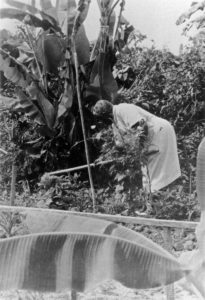
A major issue that faced women in Peoples Temple was the inequality between white women and people of color, especially women. Although African American women comprised a much higher percentage of Peoples Temple members than white women (and made up almost half of the fatalities in Jonestown) most of Jones’ secretaries were white, college-educated, and relatively young. This disparity shows Jones’ favoritism towards whites and how he failed to give important positions in Peoples Temple to African American women (Rebecca Moore 2017). More significant, however, is the lack of attention that news media and scholars have given to the black experience in the Temple and in Jonestown, although Peoples Temple and Black Religion in America (Moore, Pinn, and Sawyer 2004) is a notable exception.
The recovery of voices of African American women came to the fore in 2015, with the publication of White Nights, Black Paradise, by Sikivu Hutchinson. In this fictional account, Hutchinson (an author, educator, and filmmaker) focused on the experiences of African American women in the Temple and in Jonestown. Hutchinson produced a theatrical short of the same title, and in 2018 mounted a stage production of the book. She also organized several panel discussions that highlighted the voices of African American and biracial women in the Temple. Key among these were Yulanda Crawford, a defector whose affidavit gave early evidence of the potential for violence in Jonestown (Crawford 1978); and Leslie Wagner-Wilson, who fled Jonestown with her young son on November 18 (Wagner-Wilson 2009). These women describe a hierarchical, race-based system in which African Americans were cruelly exploited and lived essentially as prisoners in Jonestown.
Another key challenge was the nature of sexual manipulation that occurred between women and Jim Jones. Reports are complicated and sometimes conflicting: some indicate that sexual relations between Jones and his followers were consensual, such as those with Maria Katsaris and Carolyn Layton; others suggest that Jones abused his power and raped non-consenting men and women, such as Deborah Layton and Janet Phillips (Layton 1998; Q775 Transcript 1973).
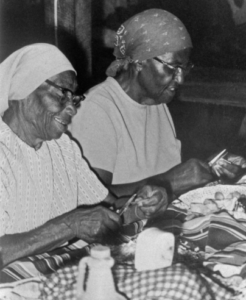
The role of women in new religious movements in general, not only in Peoples Temple, is contested. Sociologist Rosabeth Kanter argued that “defamilialization” enhanced women’s participation in the decision-making processes of utopianist communes (Kanter 1972). Certainly the resource-sharing that occurred in Jonestown, with children raised and taught by non-biological caregivers, might support Kanter’s argument. Many women were indeed freed from child-rearing tasks to do other work in the commune; at the same time, much of that work appeared to be divided along traditional gender lines, with cooking, laundry, childcare, healthcare going to women, although there were clear exceptions. Both women and men, for example, did farm labor at Jonestown. Sociologist Susan J. Palmer’s ethnographic study of women in seven different new religions did not include Peoples Temple since it was defunct (Palmer 1994). But her gender typology of sex polarity, sex complementarity, and sex unity identified in the groups that she studied does not seem entirely relevant for understanding women’s roles in Peoples Temple and Jonestown, given the absence of a clear theology or ideology of sexuality or gender.
Mary McCormick Maaga (1998) provides the most complete analysis of women’s roles in Peoples Temple, although she, too, neglects that of African American women. She challenges the notion that Jim Jones held all of the control in the movement and argues that white women had sex with Jones for both pleasure and power (Maaga 1998:49). They gained influence over others through “pillow talk,” using their sexual relationships with Jones to political and social advantage. This prestige was not derivative, but was central to the functioning of the entire operation. Women and men in the leadership did share one thing in common, however: “all had a strong desire to contribute positively and centrally to social change.” For women, their personal privilege and influence to make a difference was not realized until they joined the Temple and hooked up with Jones; men, on the other hand, could have had that same level of leadership outside the movement. “Within Peoples Temple there was an opportunity for some women to exercise power and authority beyond what either their gender or educational training would have allowed in mainstream society” (Maaga 1998:55–56).
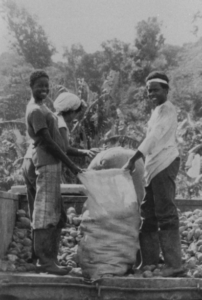
Despite the sexual exploitation that clearly occurred, white women, and some African American women, advanced through the ranks to assume positions of great responsibility for what became a multimillion-dollar operation. All women (from secretaries, cooks, and childcare providers, to school teachers, public relations directors, and financial managers) contributed valuable time and energy to the organization. It could not have existed without their labor or leadership.
Nor would the violence of the community’s final day have occurred without the facilitation of the women in acquiring and administering the poison. Yet a few African American women resisted. Leslie Wagner-Wilson fled with her young son and a dozen others before the deaths began. One elderly African American woman, Hyacinth Thrash (d. 1995) slept through the tragic events (Moore, Pinn, and Sawyer 2004: 177). And during the final gathering of the Jonestown community, Christine Miller (1918–1978) argued with Jim Jones against killing the children (Q042 Transcript 1978). However, other members of Peoples Temple stood with Jones and applauded his plan to carry out “revolutionary suicide” on November 18, 1978 (Q042 Transcript 1978).
References
**All images are courtesy Special Collections, Library and Information Access, San Diego State University.
Alternative Considerations of Jonestown and Peoples Temple website. 2018. Accessed from https://jonestown.sdsu.edu/ on 25 September 2018.
Beck, Don. n.d. “Jonestown Organization.” Alternative Considerations of Jonestown and People Temple. Accessed from https://jonestown.sdsu.edu/?page_id=35926 on 25 September 2018.
Bellefountaine, Michael. 2011. A Lavender Look at the Temple: A Gay Perspective of the Peoples Temple. iUniverse.
Crawford, Yolanda D. A. 1978. “Affidavit.” Alternative Considerations of Jonestown and People Temple. Accessed from https://jonestown.sdsu.edu/?page_id=13085 on 25 September 2018.
Eight Revolutionaries, The. 1973. “Statement.” Alternative Considerations of Jonestown and People Temple. Accessed from https://jonestown.sdsu.edu/?page_id=14075 on 25 September 2018.
Hall, John R. 1987. Gone From the Promised Land: Jonestown in American Cultural History. New Brunswick, NJ: Transaction Publishers.
Jones, Jim. n.d. “The Letter Killeth.” Alternative Considerations of Jonestown and People Temple. Accessed from https://jonestown.sdsu.edu/?page_id=14111 on 25 September 2018.
Jones, Lynetta. n.d. “The Writings of Lynetta Jones.” Alternative Considerations of Jonestown and People Temple. Accessed from https://jonestown.sdsu.edu/?page_id=62772 on 25 September 2018.
Jones, Lynetta. n.d. “The Lynetta Jones Interviews.” Alternative Considerations of Jonestown and People Temple. Accessed from https://jonestown.sdsu.edu/?page_id=13783 on 25 September 2018.
Jones, Stephan. 2005. “Marceline/Mom.” Alternative Considerations of Jonestown and People Temple. Accessed from https://jonestown.sdsu.edu/?page_id=32388 on 25 September 2018.
Kanter, Rosabeth Moss. 1972. Commitment and Community; Communes and Utopias in a Sociological Perspective. Cambridge, MA: Harvard University Press.
Kelley, James L. 2015. “Nurture Failure: A Psychobiographical Approach to the Childhood of Jim Jones.” the jonestown report, November 17. Accessed from https://jonestown.sdsu.edu/?page_id=64878 on 25 September 2018.
Layton, Deborah. 1998. Seductive Poison: A Jonestown Survivor’s Story of Life and Death in the Peoples Temple. New York: Anchor Books.
Maaga, Mary McCormick. 1998. Hearing the Voices of Jonestown: Putting a Human Face on an American Tragedy. Syracuse: Syracuse University Press.
Mills, Jeannie. 1979. Six Years With God: Life Inside Rev. Jim Jones’s Peoples Temple. New York: A&W Publishers.
Moore, Annie. 1978. “A Select Group Would Have to Kill the Majority.” Alternative Considerations of Jonestown and People Temple. Accessed from https://jonestown.sdsu.edu/?page_id=78445 on 25 September 2018.
Moore, Rebecca. 2017. “An Update on the Demographics of Jonestown.” Alternative Considerations of Jonestown and People Temple. Accessed from https://jonestown.sdsu.edu/?page_id=70495 on 25 September 2018.
Moore, Rebecca, Anthony B. Pinn, and Mary R. Sawyer, eds. 2004. Peoples Temple and Black Religion in America. Bloomington: University of Indiana Press.
Nelson, Stanley. 2006. “Jonestown: The Life and Death of Peoples Temple.” PBS American Experience.
Nesci, Domenico Arturo. 1999. The Lessons of Jonestown: An Ethnopsychoanalytic Study of Suicidal Communities. Rome: Società Editrice Universo.
Palmer, Susan Jean. 1994. Moon Sisters, Krishna Mothers, Rajneesh Lovers: Women’s Roles in New Religions. Syracuse, NY: Syracuse University Press.
Q775 Transcript. 1973. Prepared by Seriina Covarrubias, The Jonestown Institute. Accessed from https://jonestown.sdsu.edu/?page_id=27582 on 25 September 2018.
Q1059-6 Transcript. 1974. Prepared by Fielding M. McGehee III, The Jonestown Institute. Accessed from https://jonestown.sdsu.edu/?page_id=27336 on 25 September 2018.
Q042. 1978. “The ‘Death Tape’.” Alternative Considerations of Jonestown and Peoples Temple. Accessed from https://jonestown.sdsu.edu/?page_id=29084 on 25 September 2018.
Shearer, Heather. 2018. “‘Verbal Orders Don’t Go—Write It!’ Building and Maintaining the Promised Land.” Nova Religio 22:68–92.
Stephenson, Denice, ed. 2005. Dear People: Remembering Jonestown. San Francisco: California Historical Society and Heyday Books.
Wagner-Wilson, Leslie. 2009. Slavery of Faith: The Untold Story of the Peoples Temple from the Eyes of a Thirteen Year Old, Her Escape from Jonestown at 21 and Life 30 Years Later. iUniverse.
Supplementary Resources
Abbott, Catherine. 2017. “The Women of Peoples Temple.” the jonestown report, November 19. Accessed from https://jonestown.sdsu.edu/?page_id=70321 on 25 September 2018.
Guinn, Jeff. 2017. The Road to Jonestown: Jim Jones and Peoples Temple. New York: Simon & Schuster.
Moore, Rebecca. 2012. “Peoples Temple.” World Religions and Spirituality Project. Accessed from https://wrldrels.org/2016/10/08/peoples-temple/ on 25 September 2018.
Smith, Archie Jr. 1998. “We Need to Press Forward: Black Religion and Jonestown, Twenty Years Later.” Alternative Considerations of Jonestown and Peoples Temple. Accessed from https://jonestown.sdsu.edu/?page_id=16595 on 25 September 2018.
Taylor, James Lance. 2011. “Bring Out the ‘Black Dimensions’ of Peoples Temple.” the jonestown report, October 13. Accessed from https://jonestown.sdsu.edu/?page_id=29462 on 25 September 2018.